With the improvement of city people's requirements for home environment, it is hoped that home space is the place where the soul lives outside the workplace. Too much noise and city noise make us restless and difficult to calm down, with the appearance of various sound insulation glass, the home also begins to become quiet and comfortable. For the entrance of noise source, the sound insulation of doors and windows is even more important. The following maniacs will take you to choose the best sound insulation doors and windows correctly, road noise is far away from you.
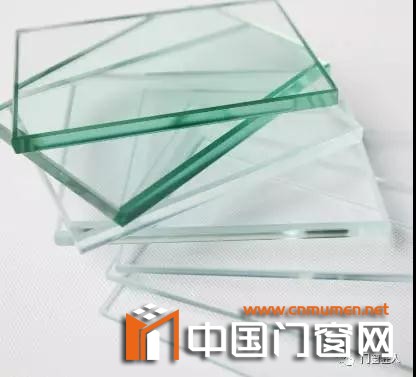
1. Insulation and truth of hollow glass
the home room is close to the road and there is a lot of noise at cars come and go in all directions.. Many home improvement owners hope to install a door and window that can isolate noise. Of course, this is correct. A good door and window can reduce the noise of 70 decibels outside the road to below 40 decibels.
However, don't be fooled by the seller's hollow glass sound insulation effect! To tell you, the biggest function of hollow glass is energy saving, heat insulation and Frost Proof. Its actual sound insulation function is even worse than that of single-layer glass with the same thickness.
Very shocking, hard to believe! The madman used what he learned all his life to tell you how to compare the sound insulation capacity of five kinds of sound insulation glass commonly used in home decoration doors and windows (hollow, laminated, single-layer hollow laminated, double-layer hollow laminated, vacuum glass), tell you who is the real king of sound insulation.
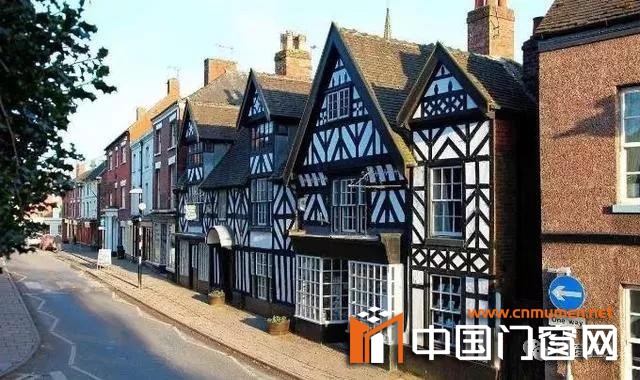
2. Compare the sound insulation effect, 4 knowledge points that must be learned
before comparing the sound insulation effects of different glasses, you must first understand these four things:
(1) how the sound is heard by human ears:
sound is a kind of pressure wave: when the car tires rub against the road and the car is whistle, their vibration will cause the rhythmic vibration of the medium-air molecules, which will make the surrounding air produce density changes, the formation of dense and interphase longitudinal waves generates sound waves, which will continue until the vibration disappears.
Sound spreads by medium, and gas, liquid and solid can spread sound. Vacuum cannot transmit sound.
(2). Coincidence effect
each kind of glass has the coincidence effect of sound insulation performance, that is, there is sound wave in a certain frequency band that can easily penetrate the glass. The purpose of noise reduction and vibration control is to find that the acoustic frequency of the coincidence effect is not in the range of the frequency band that requires noise reduction.
For example, in the following figure, the coincidence effect of hollow glass appears in the medium and low frequency band, so the ability to isolate traffic noise is not good. The coincidence effect of laminated glass appears at about 3000Hz, which is far away from the medium and low frequency traffic noise, so it has a good performance on traffic noise.
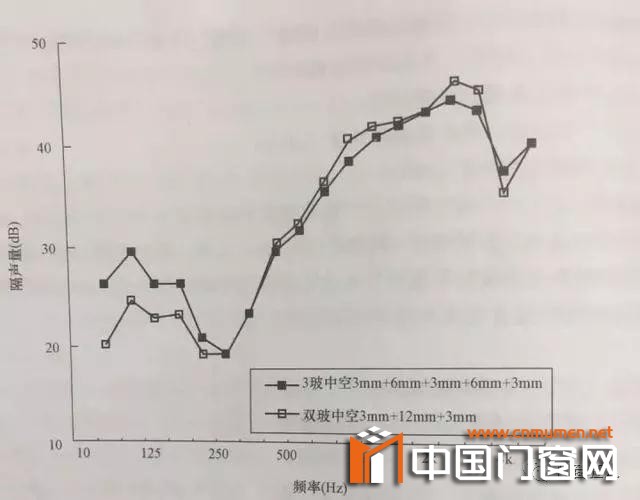
(3). Law of mass
the greater the thickness of the interlayer, the greater the sound transmission loss. That is to say, the greater the thickness of the glass, the stronger the sound insulation capacity. Usually, every time the thickness of the glass is doubled, the noise of 6 decibels can be reduced.
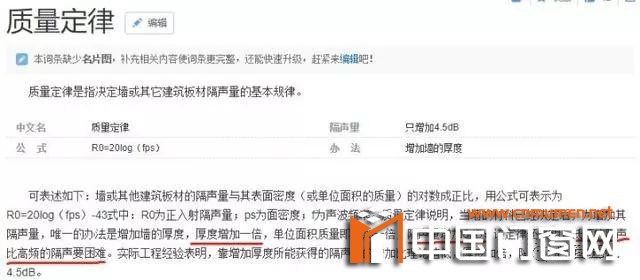
(4) China's current national standard is GB 3096-2008 and sound environment quality standard.
The noise pollution standards of residential buildings mainly refer to Class 1 and Class 2 standards, and Class 0 standards can be referred to in senior villas.
(5) comparison of sound insulation of glass
when you look at the above knowledge points about anacoustic, you can intuitively understand how different glasses are anacoustic:
hollow Glass: uses air to partially absorb the energy of medium and high frequency sound vibration, thus reducing the sound level of sound waves. Its isolation performance is related to glass thickness, gas composition of spacer layer, number and thickness of spacer layer.
Laminated glass: If you don't know about soundproof window netizens, you may feel curious about the material laminated glass for the first time. In fact, this kind of glass is a relatively popular and professional sound insulation glass in the market soundproof window. Laminated glass is generally composed of two layers of glass and film, and the two layers of glass are made of different materials, which can block sound waves of different wavelengths. The film in the middle of laminated glass is equivalent to a damping layer, it can effectively suppress the vibration of glass, thus improving the sound insulation performance of glass. And the glass thickness is not large, the density is large, the higher the density of laminated glass, the better the sound insulation effect.
Laminated glass has the coincidence effect of sound insulation performance. The purpose of noise reduction and vibration control is to find that the acoustic frequency of the coincidence effect is not in the range of the frequency band that requires noise reduction; The coincidence effect of laminated glass occurs at about 3000Hz, which is far away from the medium and low frequency traffic noise, it is currently the most ideal soundproof glass used in busy traffic trunk roads.
Rubber-laminated hollow glass has both the functions of the above two kinds of glass.
Vacuum glass: it can be completely soundproof theoretically by using the principle that the vacuum environment lacks medium and cannot transmit sound waves (but because of the existence of transparent support base added in the production process, it is equivalent to solid medium, it provides a shortcut for the transmission of sound waves, so it is not really anacoustic glass).
In order to make the comparison more scientific, I specially found a test data of the American Riverbank Acoustic Laboratory (Riverbank Acoustical Laboratories).
The sound transmission loss of monolithic glass, laminated glass, insulating glass, laminated insulating glass, etc. measured in this data, the higher the score (STC OITC RW), the better the sound insulation!

It can be concluded that the sound insulation effect of vacuum glass> double-layer laminated hollow> single-layer laminated hollow> laminated glass> hollow glass (the score of hollow glass is lower than that of single-layer glass).

4. Conclusion: the best cost-effective soundproof glass scheme
although the data has proved the sound insulation effect of each glass, the general order of Recommend of the sound insulation glass is: Hollow laminated glass> laminated glass> hollow glass> vacuum glass.
Because in actual use and purchase, you still need to consider factors such as cost performance and heat insulation.
For example, although vacuum glass can completely isolate noise theoretically, the sound insulation capacity of vacuum glass that can be sold on the market is greatly reduced due to the large number of fulcrum between glass and glass. This makes the vacuum glass of thousands per square meter look very cost-effective.
Another example is PVB film commonly used in laminated glass. The thermal conductivity at normal temperature is 0.221(W / km), and the thermal conductivity of air is 0.024, the intuitive feeling caused by the ten-fold difference in thermal conductivity is like using porcelain bowl (PVB) and wooden bowl (air) for one meal. The unideal insulation of a single laminated glass is also considered when choosing doors and windows.
Here are recommend kinds of glass matching, you can choose the most cost-effective solution according to the sound insulation demand and price:
1. The most powerful version: 5 1.14PVB 5 12A 5 1.14PVB 5
2. The most cost-effective version: 6 1.14PVB 6 12A 6, 5 1.14PVB 5 12A 5
3. Ordinary soundproof version: 6 1.14PVB 6
after talking about the core glass material of the soundproof glass, you will surely think of another important part of the window, which is the outer frame. In terms of the density of the outer frame profile, the density of the special aluminum alloy is the highest, followed by Broken Bridge aluminum, and finally plastic steel. The performance of the outer frame of soundproof window is determined by the surface density, so in terms of the surface density, the special aluminum alloy has the best sound insulation, followed by Broken Bridge aluminum, and the worst is plastic steel.
Broken Bridge aluminum cross section of outer frame and plastic steel outer frame
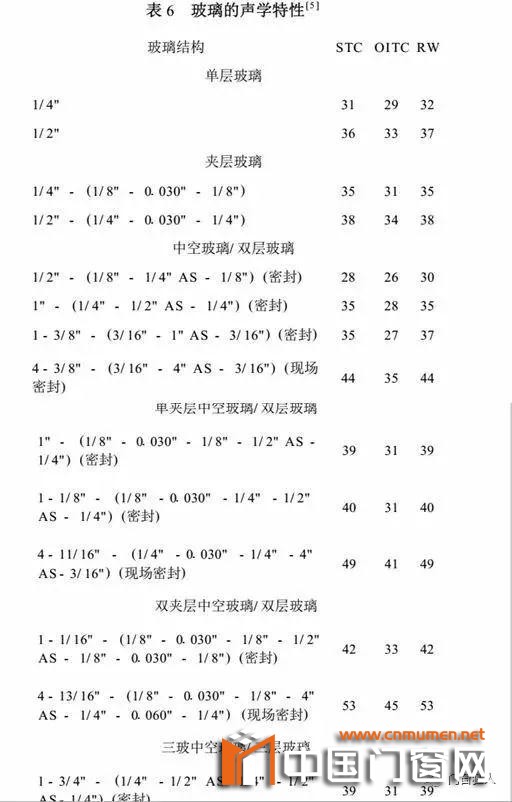
Insert a sentence here, in fact, the installation of soundproof window includes two types, one is installation, the other is external installation, installation is to add a layer of soundproof window on the side or outside of the original window, the outer installation is to remove the original window and reinstall it.
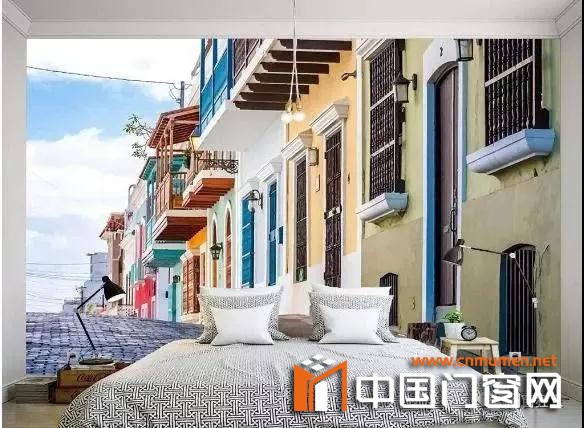


 1. Insulation and truth of hollow glass
the home room is close to the road and there is a lot of noise at cars come and go in all directions.. Many home improvement owners hope to install a door and window that can isolate noise. Of course, this is correct. A good door and window can reduce the noise of 70 decibels outside the road to below 40 decibels.
However, don't be fooled by the seller's hollow glass sound insulation effect! To tell you, the biggest function of hollow glass is energy saving, heat insulation and Frost Proof. Its actual sound insulation function is even worse than that of single-layer glass with the same thickness.
Very shocking, hard to believe! The madman used what he learned all his life to tell you how to compare the sound insulation capacity of five kinds of sound insulation glass commonly used in home decoration doors and windows (hollow, laminated, single-layer hollow laminated, double-layer hollow laminated, vacuum glass), tell you who is the real king of sound insulation.
1. Insulation and truth of hollow glass
the home room is close to the road and there is a lot of noise at cars come and go in all directions.. Many home improvement owners hope to install a door and window that can isolate noise. Of course, this is correct. A good door and window can reduce the noise of 70 decibels outside the road to below 40 decibels.
However, don't be fooled by the seller's hollow glass sound insulation effect! To tell you, the biggest function of hollow glass is energy saving, heat insulation and Frost Proof. Its actual sound insulation function is even worse than that of single-layer glass with the same thickness.
Very shocking, hard to believe! The madman used what he learned all his life to tell you how to compare the sound insulation capacity of five kinds of sound insulation glass commonly used in home decoration doors and windows (hollow, laminated, single-layer hollow laminated, double-layer hollow laminated, vacuum glass), tell you who is the real king of sound insulation.
 2. Compare the sound insulation effect, 4 knowledge points that must be learned
before comparing the sound insulation effects of different glasses, you must first understand these four things:
(1) how the sound is heard by human ears:
sound is a kind of pressure wave: when the car tires rub against the road and the car is whistle, their vibration will cause the rhythmic vibration of the medium-air molecules, which will make the surrounding air produce density changes, the formation of dense and interphase longitudinal waves generates sound waves, which will continue until the vibration disappears.
Sound spreads by medium, and gas, liquid and solid can spread sound. Vacuum cannot transmit sound.
(2). Coincidence effect
each kind of glass has the coincidence effect of sound insulation performance, that is, there is sound wave in a certain frequency band that can easily penetrate the glass. The purpose of noise reduction and vibration control is to find that the acoustic frequency of the coincidence effect is not in the range of the frequency band that requires noise reduction.
For example, in the following figure, the coincidence effect of hollow glass appears in the medium and low frequency band, so the ability to isolate traffic noise is not good. The coincidence effect of laminated glass appears at about 3000Hz, which is far away from the medium and low frequency traffic noise, so it has a good performance on traffic noise.
2. Compare the sound insulation effect, 4 knowledge points that must be learned
before comparing the sound insulation effects of different glasses, you must first understand these four things:
(1) how the sound is heard by human ears:
sound is a kind of pressure wave: when the car tires rub against the road and the car is whistle, their vibration will cause the rhythmic vibration of the medium-air molecules, which will make the surrounding air produce density changes, the formation of dense and interphase longitudinal waves generates sound waves, which will continue until the vibration disappears.
Sound spreads by medium, and gas, liquid and solid can spread sound. Vacuum cannot transmit sound.
(2). Coincidence effect
each kind of glass has the coincidence effect of sound insulation performance, that is, there is sound wave in a certain frequency band that can easily penetrate the glass. The purpose of noise reduction and vibration control is to find that the acoustic frequency of the coincidence effect is not in the range of the frequency band that requires noise reduction.
For example, in the following figure, the coincidence effect of hollow glass appears in the medium and low frequency band, so the ability to isolate traffic noise is not good. The coincidence effect of laminated glass appears at about 3000Hz, which is far away from the medium and low frequency traffic noise, so it has a good performance on traffic noise.
 (3). Law of mass
the greater the thickness of the interlayer, the greater the sound transmission loss. That is to say, the greater the thickness of the glass, the stronger the sound insulation capacity. Usually, every time the thickness of the glass is doubled, the noise of 6 decibels can be reduced.
(3). Law of mass
the greater the thickness of the interlayer, the greater the sound transmission loss. That is to say, the greater the thickness of the glass, the stronger the sound insulation capacity. Usually, every time the thickness of the glass is doubled, the noise of 6 decibels can be reduced.
 (4) China's current national standard is GB 3096-2008 and sound environment quality standard.
The noise pollution standards of residential buildings mainly refer to Class 1 and Class 2 standards, and Class 0 standards can be referred to in senior villas.
(5) comparison of sound insulation of glass
when you look at the above knowledge points about anacoustic, you can intuitively understand how different glasses are anacoustic:
hollow Glass: uses air to partially absorb the energy of medium and high frequency sound vibration, thus reducing the sound level of sound waves. Its isolation performance is related to glass thickness, gas composition of spacer layer, number and thickness of spacer layer.
Laminated glass: If you don't know about soundproof window netizens, you may feel curious about the material laminated glass for the first time. In fact, this kind of glass is a relatively popular and professional sound insulation glass in the market soundproof window. Laminated glass is generally composed of two layers of glass and film, and the two layers of glass are made of different materials, which can block sound waves of different wavelengths. The film in the middle of laminated glass is equivalent to a damping layer, it can effectively suppress the vibration of glass, thus improving the sound insulation performance of glass. And the glass thickness is not large, the density is large, the higher the density of laminated glass, the better the sound insulation effect.
Laminated glass has the coincidence effect of sound insulation performance. The purpose of noise reduction and vibration control is to find that the acoustic frequency of the coincidence effect is not in the range of the frequency band that requires noise reduction; The coincidence effect of laminated glass occurs at about 3000Hz, which is far away from the medium and low frequency traffic noise, it is currently the most ideal soundproof glass used in busy traffic trunk roads.
Rubber-laminated hollow glass has both the functions of the above two kinds of glass.
Vacuum glass: it can be completely soundproof theoretically by using the principle that the vacuum environment lacks medium and cannot transmit sound waves (but because of the existence of transparent support base added in the production process, it is equivalent to solid medium, it provides a shortcut for the transmission of sound waves, so it is not really anacoustic glass).
In order to make the comparison more scientific, I specially found a test data of the American Riverbank Acoustic Laboratory (Riverbank Acoustical Laboratories).
The sound transmission loss of monolithic glass, laminated glass, insulating glass, laminated insulating glass, etc. measured in this data, the higher the score (STC OITC RW), the better the sound insulation!
(4) China's current national standard is GB 3096-2008 and sound environment quality standard.
The noise pollution standards of residential buildings mainly refer to Class 1 and Class 2 standards, and Class 0 standards can be referred to in senior villas.
(5) comparison of sound insulation of glass
when you look at the above knowledge points about anacoustic, you can intuitively understand how different glasses are anacoustic:
hollow Glass: uses air to partially absorb the energy of medium and high frequency sound vibration, thus reducing the sound level of sound waves. Its isolation performance is related to glass thickness, gas composition of spacer layer, number and thickness of spacer layer.
Laminated glass: If you don't know about soundproof window netizens, you may feel curious about the material laminated glass for the first time. In fact, this kind of glass is a relatively popular and professional sound insulation glass in the market soundproof window. Laminated glass is generally composed of two layers of glass and film, and the two layers of glass are made of different materials, which can block sound waves of different wavelengths. The film in the middle of laminated glass is equivalent to a damping layer, it can effectively suppress the vibration of glass, thus improving the sound insulation performance of glass. And the glass thickness is not large, the density is large, the higher the density of laminated glass, the better the sound insulation effect.
Laminated glass has the coincidence effect of sound insulation performance. The purpose of noise reduction and vibration control is to find that the acoustic frequency of the coincidence effect is not in the range of the frequency band that requires noise reduction; The coincidence effect of laminated glass occurs at about 3000Hz, which is far away from the medium and low frequency traffic noise, it is currently the most ideal soundproof glass used in busy traffic trunk roads.
Rubber-laminated hollow glass has both the functions of the above two kinds of glass.
Vacuum glass: it can be completely soundproof theoretically by using the principle that the vacuum environment lacks medium and cannot transmit sound waves (but because of the existence of transparent support base added in the production process, it is equivalent to solid medium, it provides a shortcut for the transmission of sound waves, so it is not really anacoustic glass).
In order to make the comparison more scientific, I specially found a test data of the American Riverbank Acoustic Laboratory (Riverbank Acoustical Laboratories).
The sound transmission loss of monolithic glass, laminated glass, insulating glass, laminated insulating glass, etc. measured in this data, the higher the score (STC OITC RW), the better the sound insulation!
 It can be concluded that the sound insulation effect of vacuum glass> double-layer laminated hollow> single-layer laminated hollow> laminated glass> hollow glass (the score of hollow glass is lower than that of single-layer glass).
It can be concluded that the sound insulation effect of vacuum glass> double-layer laminated hollow> single-layer laminated hollow> laminated glass> hollow glass (the score of hollow glass is lower than that of single-layer glass).
 4. Conclusion: the best cost-effective soundproof glass scheme
although the data has proved the sound insulation effect of each glass, the general order of Recommend of the sound insulation glass is: Hollow laminated glass> laminated glass> hollow glass> vacuum glass.
Because in actual use and purchase, you still need to consider factors such as cost performance and heat insulation.
For example, although vacuum glass can completely isolate noise theoretically, the sound insulation capacity of vacuum glass that can be sold on the market is greatly reduced due to the large number of fulcrum between glass and glass. This makes the vacuum glass of thousands per square meter look very cost-effective.
Another example is PVB film commonly used in laminated glass. The thermal conductivity at normal temperature is 0.221(W / km), and the thermal conductivity of air is 0.024, the intuitive feeling caused by the ten-fold difference in thermal conductivity is like using porcelain bowl (PVB) and wooden bowl (air) for one meal. The unideal insulation of a single laminated glass is also considered when choosing doors and windows.
Here are recommend kinds of glass matching, you can choose the most cost-effective solution according to the sound insulation demand and price:
1. The most powerful version: 5 1.14PVB 5 12A 5 1.14PVB 5
2. The most cost-effective version: 6 1.14PVB 6 12A 6, 5 1.14PVB 5 12A 5
3. Ordinary soundproof version: 6 1.14PVB 6
after talking about the core glass material of the soundproof glass, you will surely think of another important part of the window, which is the outer frame. In terms of the density of the outer frame profile, the density of the special aluminum alloy is the highest, followed by Broken Bridge aluminum, and finally plastic steel. The performance of the outer frame of soundproof window is determined by the surface density, so in terms of the surface density, the special aluminum alloy has the best sound insulation, followed by Broken Bridge aluminum, and the worst is plastic steel.
Broken Bridge aluminum cross section of outer frame and plastic steel outer frame
4. Conclusion: the best cost-effective soundproof glass scheme
although the data has proved the sound insulation effect of each glass, the general order of Recommend of the sound insulation glass is: Hollow laminated glass> laminated glass> hollow glass> vacuum glass.
Because in actual use and purchase, you still need to consider factors such as cost performance and heat insulation.
For example, although vacuum glass can completely isolate noise theoretically, the sound insulation capacity of vacuum glass that can be sold on the market is greatly reduced due to the large number of fulcrum between glass and glass. This makes the vacuum glass of thousands per square meter look very cost-effective.
Another example is PVB film commonly used in laminated glass. The thermal conductivity at normal temperature is 0.221(W / km), and the thermal conductivity of air is 0.024, the intuitive feeling caused by the ten-fold difference in thermal conductivity is like using porcelain bowl (PVB) and wooden bowl (air) for one meal. The unideal insulation of a single laminated glass is also considered when choosing doors and windows.
Here are recommend kinds of glass matching, you can choose the most cost-effective solution according to the sound insulation demand and price:
1. The most powerful version: 5 1.14PVB 5 12A 5 1.14PVB 5
2. The most cost-effective version: 6 1.14PVB 6 12A 6, 5 1.14PVB 5 12A 5
3. Ordinary soundproof version: 6 1.14PVB 6
after talking about the core glass material of the soundproof glass, you will surely think of another important part of the window, which is the outer frame. In terms of the density of the outer frame profile, the density of the special aluminum alloy is the highest, followed by Broken Bridge aluminum, and finally plastic steel. The performance of the outer frame of soundproof window is determined by the surface density, so in terms of the surface density, the special aluminum alloy has the best sound insulation, followed by Broken Bridge aluminum, and the worst is plastic steel.
Broken Bridge aluminum cross section of outer frame and plastic steel outer frame
 Insert a sentence here, in fact, the installation of soundproof window includes two types, one is installation, the other is external installation, installation is to add a layer of soundproof window on the side or outside of the original window, the outer installation is to remove the original window and reinstall it.
Insert a sentence here, in fact, the installation of soundproof window includes two types, one is installation, the other is external installation, installation is to add a layer of soundproof window on the side or outside of the original window, the outer installation is to remove the original window and reinstall it.
